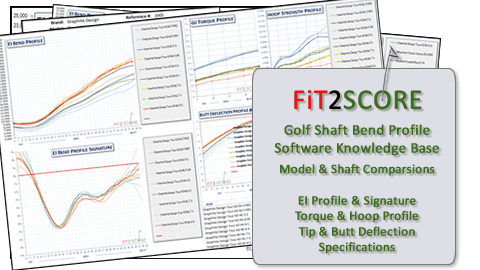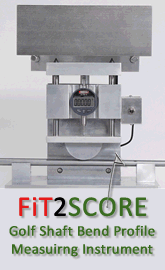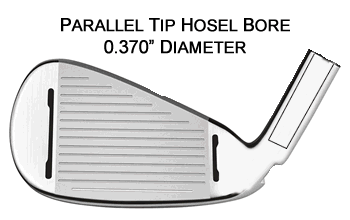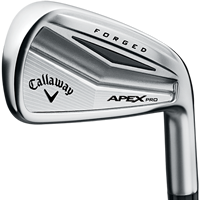KBS Tour FLT Iron Shafts
 Kim Braly has been designing and making shafts for around 40 years. That’s a long time. In my opinion fitting is an experience based art form and is likely to remain so. That said, over 40 years one accumulates an impressive amount of experience.
Kim Braly has been designing and making shafts for around 40 years. That’s a long time. In my opinion fitting is an experience based art form and is likely to remain so. That said, over 40 years one accumulates an impressive amount of experience.
The KBS Tour was the first shaft produced by Femco steel as the KBS brand. We have seen a lot of designs since its introduction, most of which are reviewed here. This year, KBS is introducing its first flighted design. My experience with ‘flighted’ shafts goes back to the Project X Flighted designs. That design was promoted as having the propensity to create the same ball flight height throughout the set. The short irons height apex being lower and the long iron height apex being higher than the conventional set of Project X shafts.
It was not until I measured the KBS Tour FLT shafts and compared them to the KBS Tour that I understood exactly how that is accomplished. In a shaft product line like KBS, the shaft bend profiles are the same for all shafts in the design family. As they get heavier, they get stiffer. And, as they get stiffer for any particular golfer, the launch angle tends to come down. This is what I love about the KBS mix of shafts. They are available in 5 gram increments, with flex designations of R, R+, S, S+ and X. If I want to change a clients launch angle I move the stiffness up or down 5 grams. Now before the professional fitters reading this jump on me, that can also be accomplished by hard stepping or soft stepping the set. Leaving the weight the same but altering the tip lengths.
The technical discussion, measurements and testing results are available only to registered readers
In this video Kim and I discuss set stiffness gradients. After a discussion of the KBS Tour 560 and 580 shafts we talk about the FLT design. He tells us this shaft is already getting tour play. When you push the flight apex of those longer irons out, not only is there likely to be some distance gain, but the ball will have a steeper angle of descent. What I refer to as drop and stop trajectory.
Lets take a look at the numbers in a way I have not presented the here before. This style of information is now incorporated into the latest version of the Fit2Score shaft knowledge base. The set charts shown above are also from that software.
The technical discussion, measurements and testing results are available only to registered readers
The tip to butt rations indicate a mid launch as is typical on the KBS Tour. Torque is typical for steel, low. Balance is conventional, the weight range works for the average to tour level player. The low ninety driver swing speed player is going to fit into the 110 or 115 gram R or R+ models.
To continue reading this section of the review, you must be registered at a higher level membership.
Russ
 The KBS Tour Hybrid Prototype is the first graphite shaft offered by KBS. It is a natural extension of the brand into carbon fiber products. My measurements of the EI profile of the shaft confirmed the KBS marketing claim, this shaft is an extension of the KBS Tour and KBS FLT set. Hybrids built with this shaft will be a perfect extension of an iron set. Listen to Kim Braly describe the shaft:
The KBS Tour Hybrid Prototype is the first graphite shaft offered by KBS. It is a natural extension of the brand into carbon fiber products. My measurements of the EI profile of the shaft confirmed the KBS marketing claim, this shaft is an extension of the KBS Tour and KBS FLT set. Hybrids built with this shaft will be a perfect extension of an iron set. Listen to Kim Braly describe the shaft:






